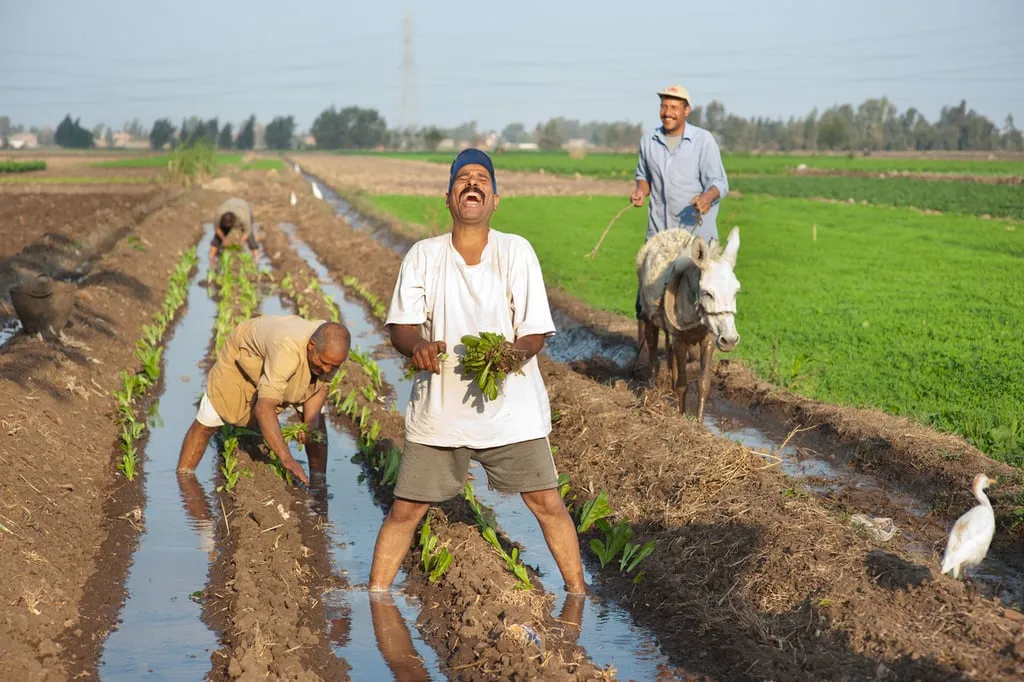In the arid landscapes of Egypt, where water is a precious commodity, researchers are turning to innovative technologies to ensure sustainable agricultural practices. A recent study published in the journal *Water Science* (translated from Arabic as “Science of Water”) has shed light on the critical role of water management and reuse in the Western Nile Delta. Led by Walaa M. Abdelaziz of the Drainage Research Institute at the National Water Research Center in Cairo, the research utilizes the SIWARE model to simulate various irrigation scenarios and their impacts on soil salinity and crop yield.
Water scarcity is a significant obstacle to sustainable development, particularly in arid regions. In Egypt, limited freshwater resources pose challenges to agricultural activities, which are vital to the country’s economy. The SIWARE model, which stands for SImulation of Water management of Arab Republic of Egypt, integrates diverse datasets including daily meteorological data, irrigation schedules, crop patterns, soil properties, and water salinity levels. This comprehensive approach allows researchers to explore the impacts of reusing drainage water on soil salinity, crop yield, and sustainable irrigation practices.
“Our study provides useful information on the potential spatial distribution of drainage water reuse and its associated salinity risks,” Abdelaziz explained. The research found that about 835.9 million cubic meters of drainage water are reused unofficially by farmers each year, with 86% classified as medium salinity (0.75–2 dS/m). Under a scenario of 30% reduced availability of fresh water, unofficial reuse decreased to 802.2 million cubic meters per year.
The study also revealed that average soil salinity was 2.55 dS/m, with higher salinity levels found in the northern and western coastal areas. About 533,000 feddans (approximately 2.2 million acres) were mapped as having a moderate degree of salinity (2–4 dS/m). Drainage water from the Edko and Umom drains has substantial reuse potential for crops tolerant to salinity up to 2,000 ppm. Nearly all water from the Edko drain meets reuse standards, and 60% of Umom drainage water is suitable. However, under reduced freshwater scenarios, reusable water from the Umom drain declined to 48%.
This research underscores the need to integrate drainage water reuse into water resource management plans. Enhanced adaptation tactics and irrigation techniques are crucial to address salt issues and water scarcity, ensuring the long-term sustainability of agriculture in the Western Nile Delta.
The findings have significant implications for the energy sector as well. Efficient water management practices can reduce the energy required for pumping and treating water, leading to cost savings and a smaller carbon footprint. Additionally, sustainable agricultural practices can contribute to food security, which is closely linked to energy security.
As the world grapples with the challenges of climate change and resource depletion, innovative solutions like the SIWARE model offer hope for a more sustainable future. By integrating advanced technologies and data-driven approaches, researchers and policymakers can develop strategies that balance the needs of agriculture, industry, and the environment.
“This study re-emphasizes the need to integrate drainage water reuse into water resource management plans,” Abdelaziz noted. The research published in *Water Science* not only highlights the current state of water management in the Western Nile Delta but also paves the way for future developments in the field. As we strive for a more sustainable future, the insights gained from this study will be invaluable in shaping policies and practices that ensure the responsible use of our most precious resource: water.

